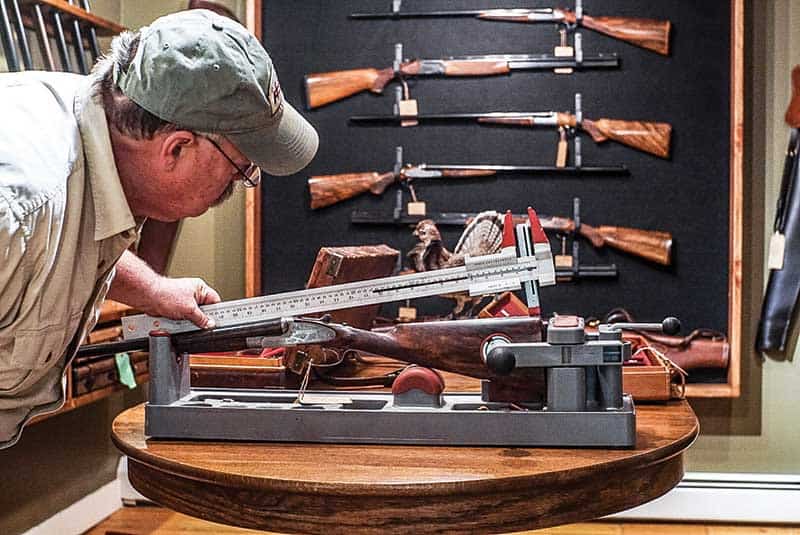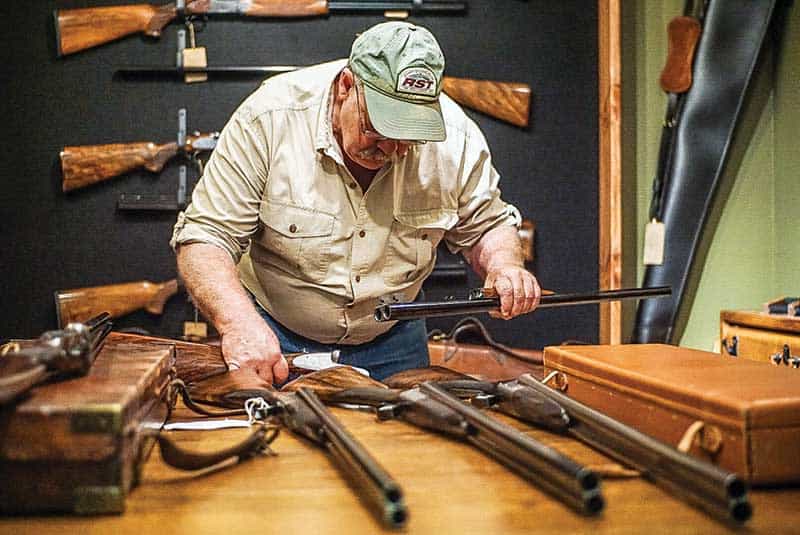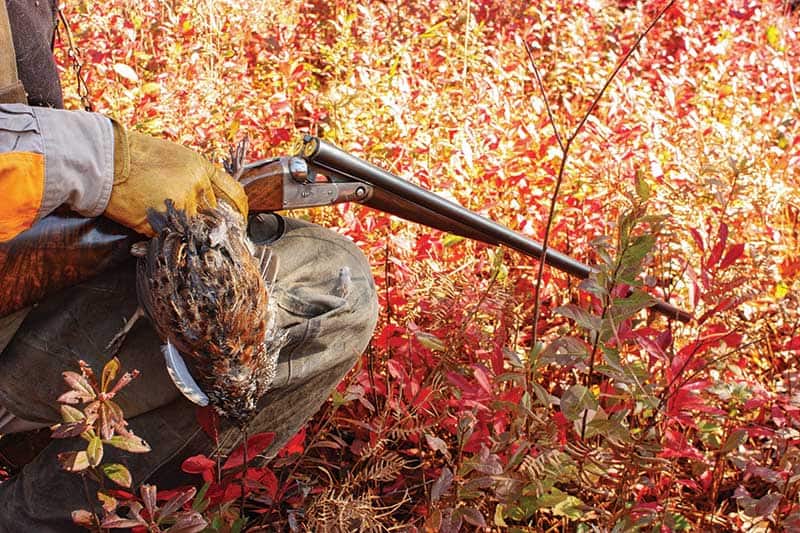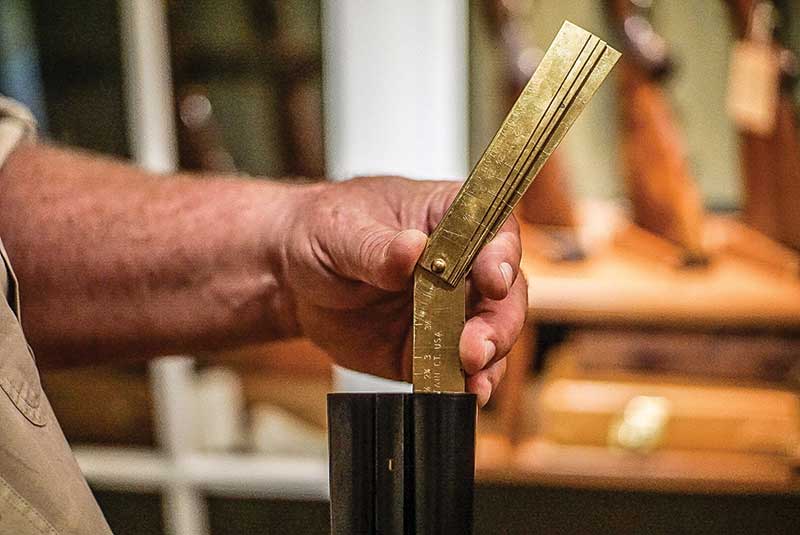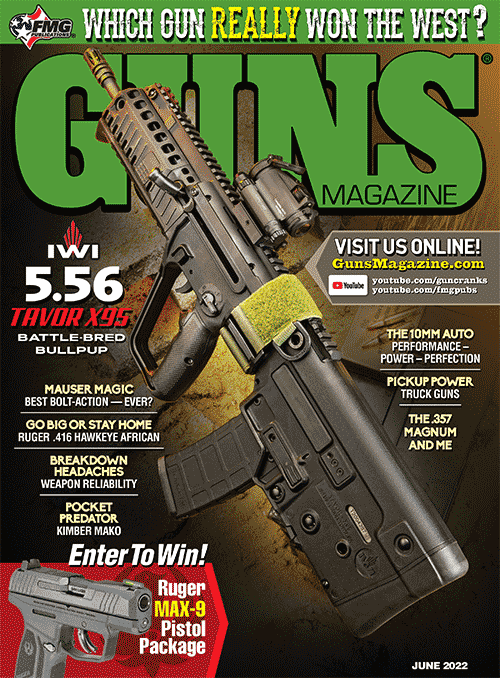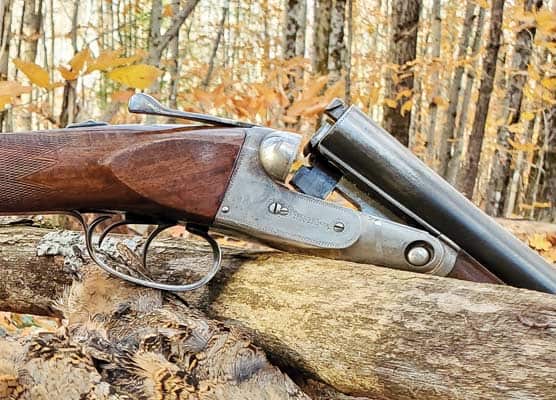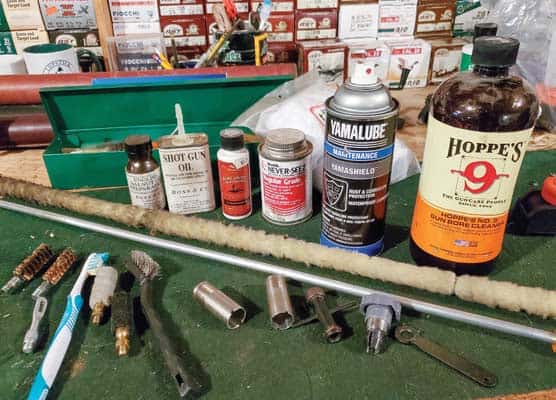Buying a classic shotgun
It’s more about why
you should than shouldn’t
I have a love/hate relationship with gun shops. Whenever I’m driving and see a “GUNS!” sign I jack the brakes and rip into the parking lot. Who knows what dusty little gem might be sitting alone in a rack? It’s the same with online listings, but these days I’ve got to be more careful when scrolling through the thousands … tens of thousands … or more listings. A focused search easily can kill a weekend, which leaves no time for dog training or scouting for covers.
The Hunt
There’s never a question of “if” I can find the American classic of my dreams, but instead if it’s the right one for me. The aging of our shotgun community has resulted in many collections coming available. These assortments are the result of a life spent finding, buying and shooting American and Continental classics made from high quality materials, precise machining and outstanding fit and finish. The last thing I need is another duck gun, but it didn’t stop me from buying a Parker VH 12 gauge on a #2 frame at a North Carolina gun shop. The 30″ barrels choked modified and full were ideal for waterfowl with 2-¾” shells. The cost? $500. I’m eyeballing a minty Winchester Model 12 at a gun shop near my home. No one wants to spend $350 for the 16-gauge, but I will. It’s half the cost of a decent lawnmower and a whole lot more fun.
You’ll want to check for barrel dents, make sure the barrels haven’t been shortened like the late and legendary Frank Woolner did to his Winchester Model 59 when he wanted more responsive handling and a cylinder bore for the grouse/woodcock woods. Loose hinge pins on double guns can be an issue as buggered screws are an indication of repair work done by an amateur. Have barrel thickness measured with a micrometer to ensure the walls are thick enough, and, while you’re at it, check the choke diameters, too. However, there are three main points that consistently pop up in used gun shops, and they’re always worthy of consideration.
First
Get a professional inspection. Find a specialist with intimate knowledge of the brand and model you’re looking to buy. Vermont’s Lars Jacob of Lars Jacob Wingshooting is one of them. “Take the Winchester 21, for example,” he said. “The shotgun featured two types of bluing, with frames being hot blued while barrels were cold blued. Shooters notice that immediately as a frame with original bluing appears as a shiny blue while barrels have a flat hue. If the frame and barrels are of the same hue then you quickly know the shotgun has been refinished. On further inspection, hang the barrels from the barrel lump. You can also hook and hang them on your finger. Tap the barrels with a pen and listen to the sound it makes. If there is a wind-chime ring they were correctly refinished. If there is a thump then they may look good but were improperly restored.”
The knowledge coming from a professional gunsmith’s inspection is worth every penny. If the gun passes muster then you’ll have additional confidence. If it fails you’ll avoid a lot of heartburn.
Second
Measure your stock. Used shotguns may be part of a collection where they’ll sit on display. But if you’re looking for a shooter then pay special attention to stock dimensions. Larry DelGrego of DelGrego and Sons in Ilion, N.Y., are the fourth generation specialists who repair Parker Bros and Remington Model 32 over/under shotguns. While collectors favor original stocks on their gunning irons, shooters routinely do. Older American shotguns typically have too much drop at comb and heel, and their length of pull is much shorter. According to DelGrego, “Up until World War II, stocks had a lot of drop. American shooters have descended from rifle shooters, and their head position was high. When they returned from the war and returned home to hunt, to shoot skeet or trap, American manufacturers designed stocks around their desire to hold their heads high. As a result, vintage American stock dimensions have far more drop than current models. After World War II, stock dimensions flattened out so they’d better match the dynamic style of shotgun shooting.”
Wingshooters need dimensions that produce rock-solid mounts with eyes looking down the rib. Too short of a stock makes shoulders roll too far forward while too much drop and there is a perfect view of the safety. Birds aren’t clearly seen in those instances, and it means they’re probably missed. Today’s off-the-rack shotguns typically measure 14-½” LOP x 1-1/2″ DAC and 2-1/2″ DAH. Always get a professional gun fitting then when you find a candidate in a gun shop, it’s easy to pull out a tape measure and know if it’s a fit.
Third
Chamber length — In the past century, shotshell advancements have been significant. Yet older classics were designed around lower compression shells of a shorter overall length. Common-to-the-era chamber lengths measured 2-1/2″, 2-5/8″, or 2-9/16″. If you drop an unfired 2-3/4″ shell in a 2-½” chamber it’s a fit. But here’s the problem — modern shells have full crimps which expand to 2-3/4″ upon discharge. Short chambers won’t allow that extra ¼” to unfold and the extra pressure damages forcing cones and hinge pins.
Measure your chambers and if they’re too short for the shells you’re shooting then get them lengthened. Another work-around is to buy shorter, lower compression shells. Companies like RST Shotshells and Polywad have great assortments.
Shooting a classic shotgun is an experience. Vintage shotguns connect modern gunners to a kinder, more spirited time. We carry their traditions forward, ensuring those wonderful times are kept alive.
